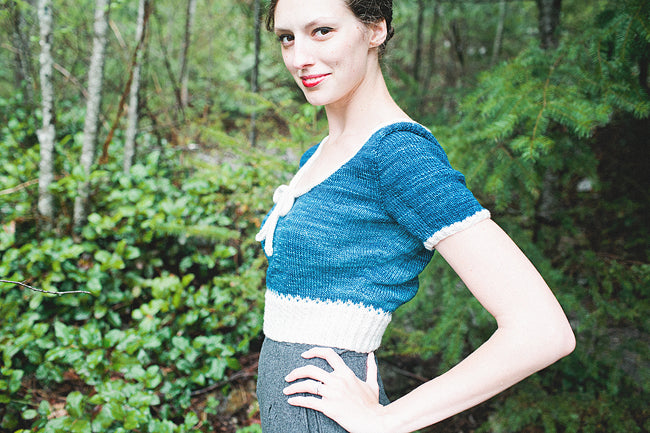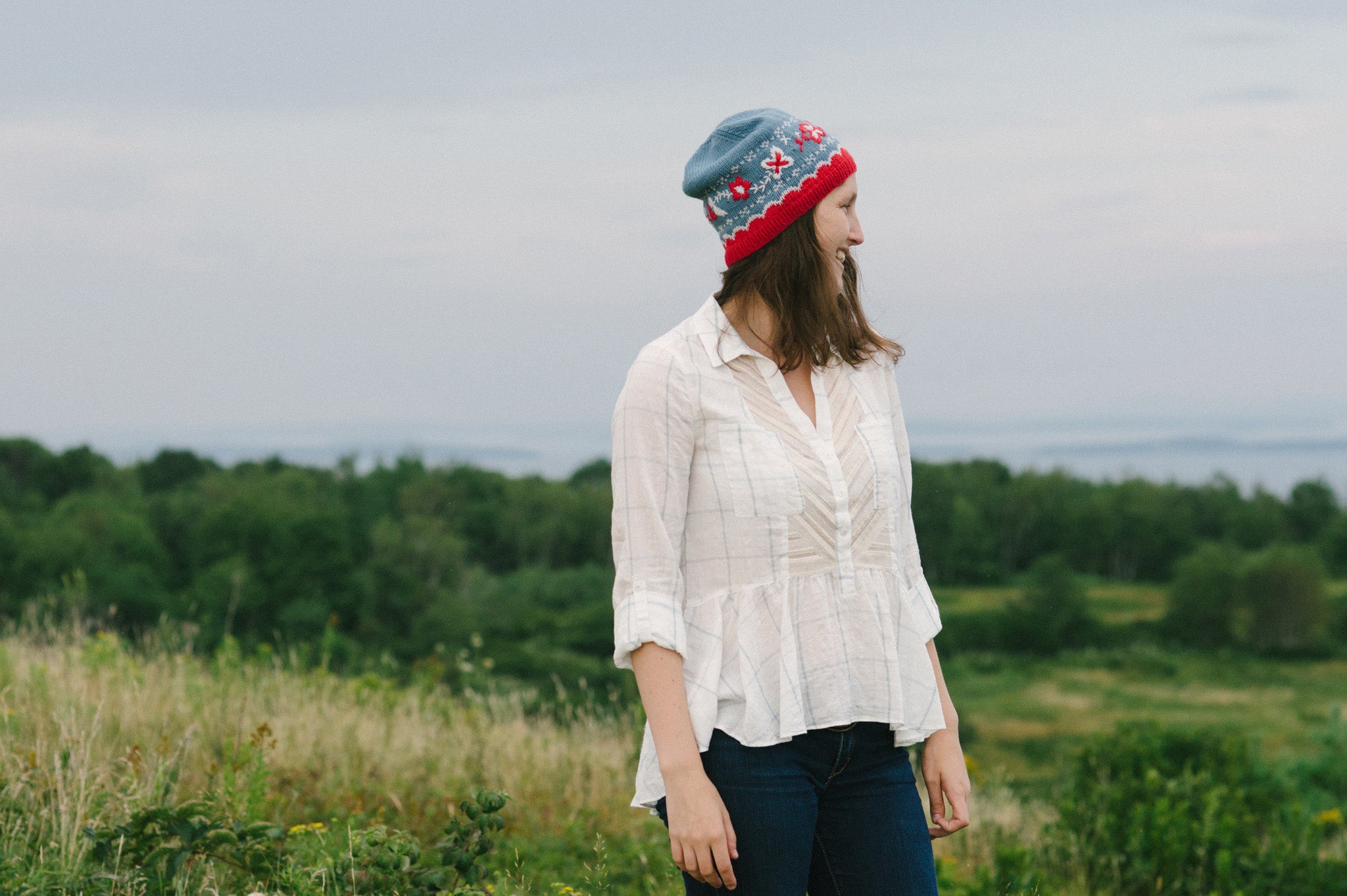berit and ebba
Dianna Walla joins us to talk about both of her designs released this week—first Ebba, and today, Berit—how one came to be from the other, plus a little background on where she finds her inspiration for the pieces. Take it away, Dianna!
Even before I really got into knitting, I always loved the bold beauty of Norwegian sweaters with intricate colorwork. The motifs, typically worked in just two or three colors with high contrast (which sets Norwegian knitting apart from multi-colored Fair Isle designs) bring to mind for many people ski holidays, snowy winters, and hot chocolate by the fire. Winter has always been my favorite season, so I suppose that spoke to me. I began to get interested in Norway itself as a teenager, and as I began learning about Norway, that interest and my interest in traditional Norwegian knitting started to fuel each other.
I had long wanted to design a traditional Norwegian-style sweater, and it’s hard to get more traditional than a drop shoulder sweater with stranded colorwork. The Setesdal lusekofte (or “lice jacket,” so named for the allover pattern on the body) is one of the oldest and most traditional examples of this, but there have been many creative riffs on this design in Norwegian knitting history. The boxy body and drop shoulder sleeves are the common element, and that formed the foundation for Ebba, but I also wanted to give it a slightly updated fit and my own take on the colorwork. My favorite detail in Ebba’s colorwork is the four-petaled flower motif in the yoke, which I based on my engagement ring (a family ring from my husband’s side of the family; Ebba was his grandmother’s middle name).
Another feature of traditional Norwegian handcrafts I’ve more recently come to love - and one that is often used on the lusekofte - is embroidery. Many of the regional folk costumes (worn on some holidays and other special events) feature rich embroidery as well. When I had yarn leftover from knitting Ebba, I decided that in the spirit of the lusekofte a piece incorporating knitting and embroidery would be fitting, and that is how Berit came about. The stranded colorwork echoes some of the motifs used in Ebba, and the embroidery is worked after the hat is knit. I kept it simple, so that even an embroidery beginner (like myself) could work it, but I think the effect is striking and a very different one than stranded colorwork would normally give on its own.
For those wanting to use Ebba leftovers to make Berit: the sample hat (knit in the 20” / 51 cm size) used around 130 yards of Delft, 40 yards of Frost and 47 yards of Peaks Ferry (36 grams, 11 grams, and 13 grams, respectively). Your yardage may vary depending on your size and your embroidery, but in many cases there will be enough Frost and Peaks Ferry left over from Ebba (and in some cases enough Delft as well). If the size you’re working for Ebba is right on the edge with a yarn color (if it calls for 1 skein of Peaks Ferry while the next size up calls for 2 skeins, for example), you’ll be more likely to need extra yarn in that color to make Berit. Weighing the leftovers is the best way to determine how much yarn you have left.
For anyone interested in learning more about the Setesdal lusekofte and its place in Norwegian knitting history, I'd highly recommend Annemor Sundbø's book, Setesdal Sweaters: the History of the Norwegian Lice Pattern.
Dianna, thank you for sharing these lovely details with us today! We especially loved the personal meaning incorporated into Ebba's colorwork motifs—one of the many, many things we treasure about our craft is that often, there is even more to a beautiful design than meets the eye.
Keep up with Dianna on her website, Paper Tiger, and on Ravelry.

In case you missed it, earlier this week we wrote a bit about Ebba, complete with a few helpful resources you'll find online for cutting your teeth on steeking, if you're new to the technique.
And speaking of resources: for Berit's beautiful embellishments, we have a number of links for you on how to add these extra–special touches to your project (something that, once you begin doing, you may feel an irresistible urge to apply to everything!):
Sublime Stitching Tutorials (details for the stitches used in Berit are linked right within the pattern)
3 Simple Ways to Add Embroidery to Your Knitting (Craftsy blog)
Beyond the Basics – Embroidery (Vogue Knitting)
A video tutorial on embroidering onto knitting (VideoJug)
These patterns inspire me to try out some new techniques; what about you?





















